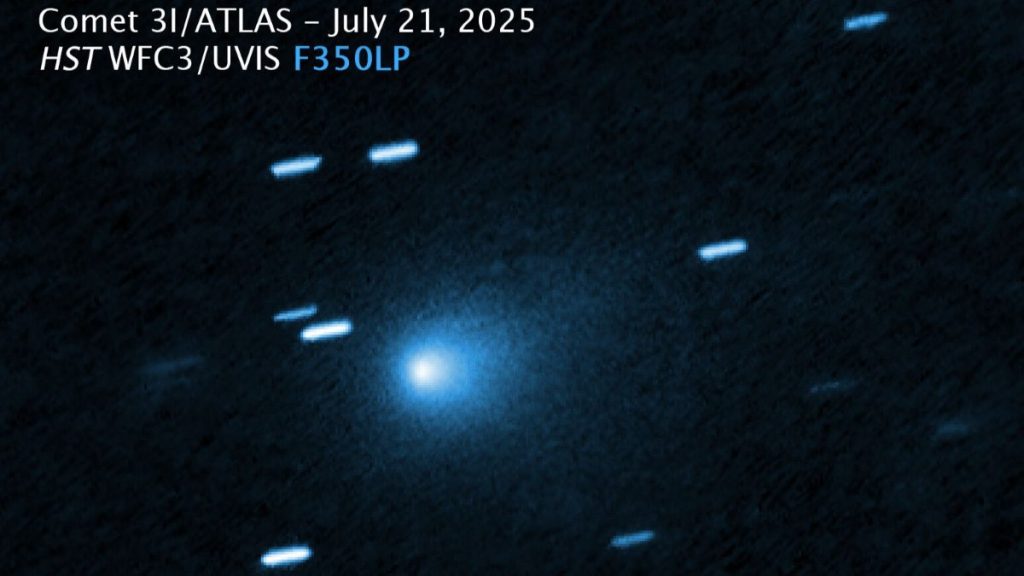The metal may be released from molecules that break apart when exposed to sunlight.
Others are reading now
Astronomers have detected glowing nickel vapor in the atmosphere of the interstellar comet 3I/ATLAS, a discovery that defies expectations and could reshape our understanding of the chemistry of distant star systems.
A rare discovery
Researchers using the Very Large Telescope (VLT) in Chile found traces of nickel gas surrounding 3I/ATLAS at a distance of nearly four times that between the Earth and the Sun.
Temperatures at that range are far too cold for metal to vaporize naturally, making the find especially surprising.
The detection, announced by a team led by scientists from Chile and the United States, marks one of the first times that metallic elements have been observed escaping from an interstellar object so far from the Sun.
Chemical mystery
The nickel’s presence, without a corresponding signature of iron, has left scientists puzzled.
Also read
According to their report, the metal may be released from molecules that break apart when exposed to sunlight, rather than through the usual process of direct heating.
This would mean that chemical reactions involving organic compounds or carbon monoxide could free nickel atoms at far lower temperatures than previously thought possible.
Clues from deep space
Observations from the James Webb Space Telescope (JWST) support the findings, showing that the comet’s surrounding gas cloud contains an unusually high amount of carbon dioxide compared with water.
The combination of CO₂, water ice, and carbon monoxide suggests a complex chemistry, one that may have formed in a cold, distant environment around another star billions of years ago.
As 3I/ATLAS approaches its closest point to the Sun on October 29, astronomers expect further increases in its activity, possibly revealing new chemical signatures.
Also read
A window into other worlds
Scientists say the comet’s strange chemistry could help reveal whether the materials that build planets are similar across the galaxy or vary depending on where they form.
By comparing 3I/ATLAS to its predecessors, ‘Oumuamua and 2I/Borisov, researchers hope to learn how interstellar visitors preserve the history of their home systems.
As the comet continues its journey through the inner solar system, it offers one last opportunity to study material from another world before it disappears into the depths of interstellar space once again.
Sources: NASA, European Southern Observatory, Space.com


